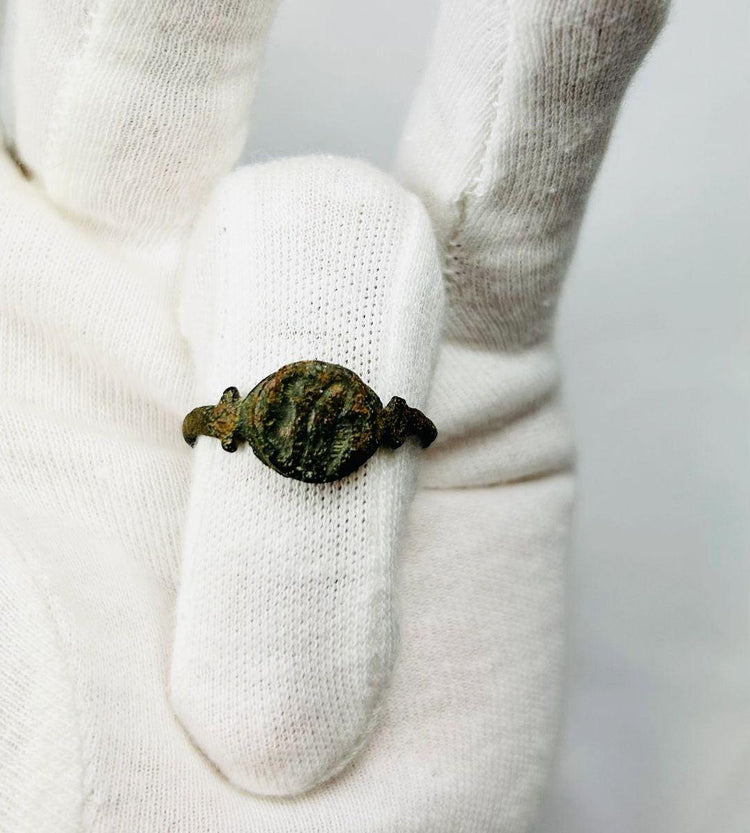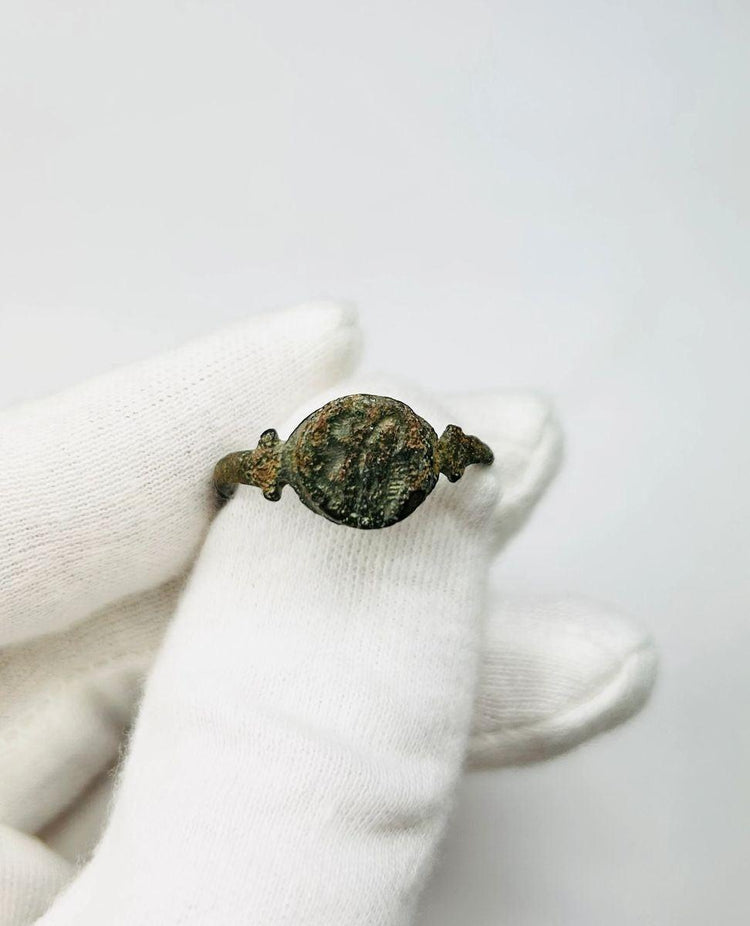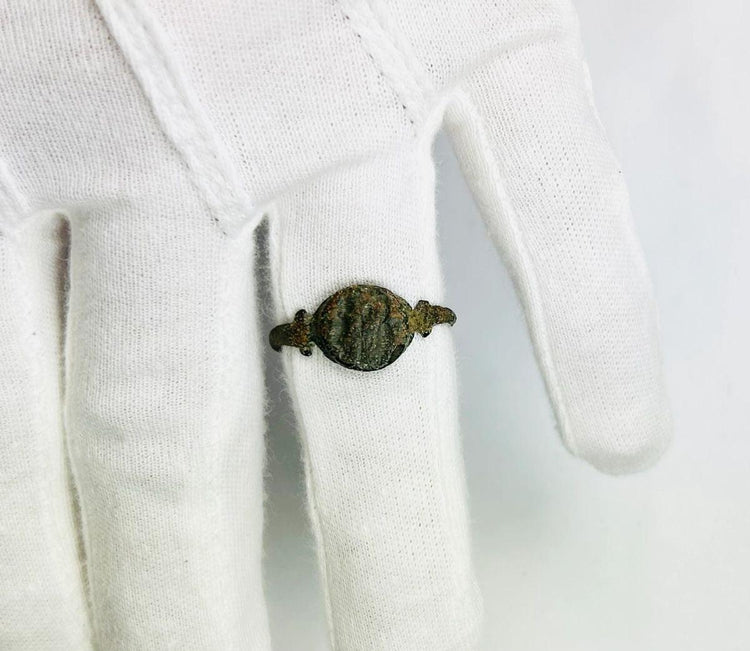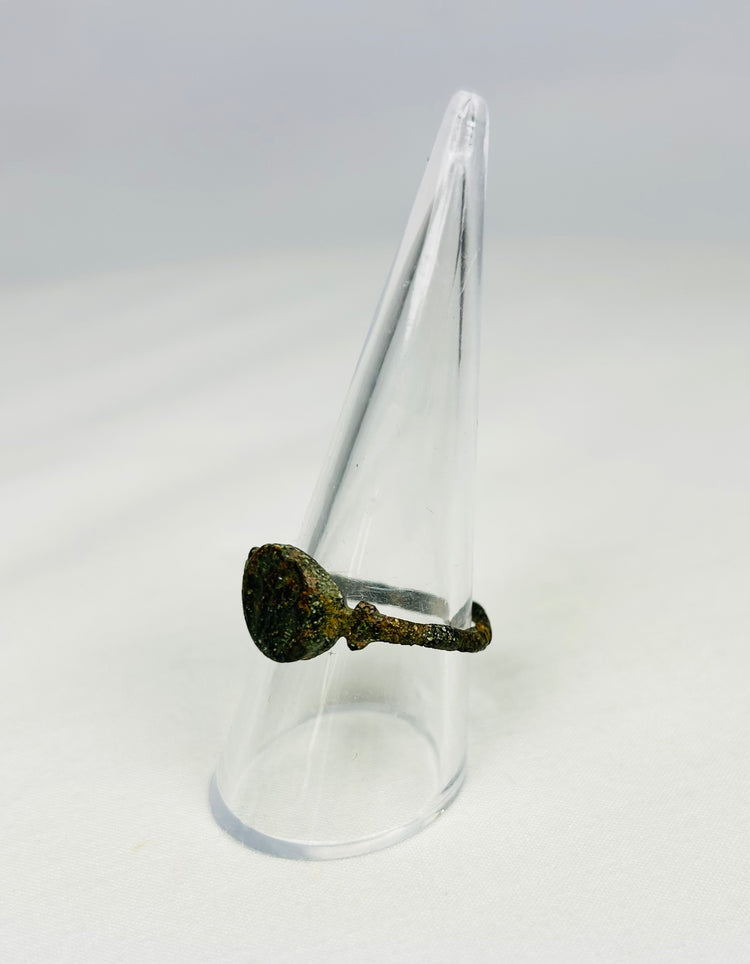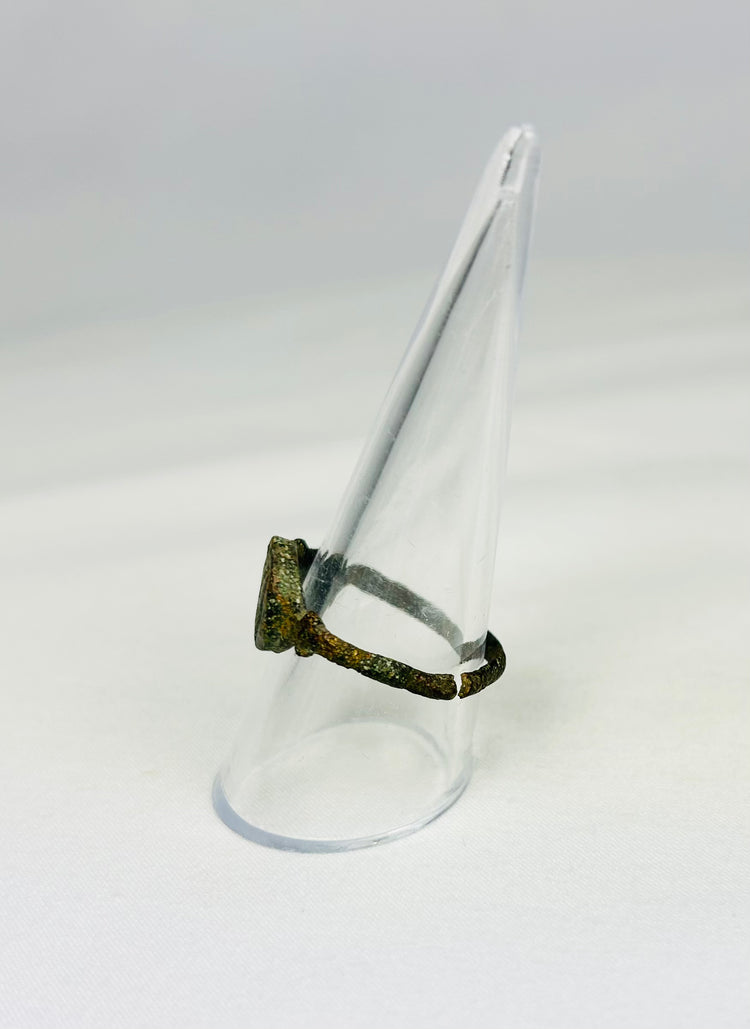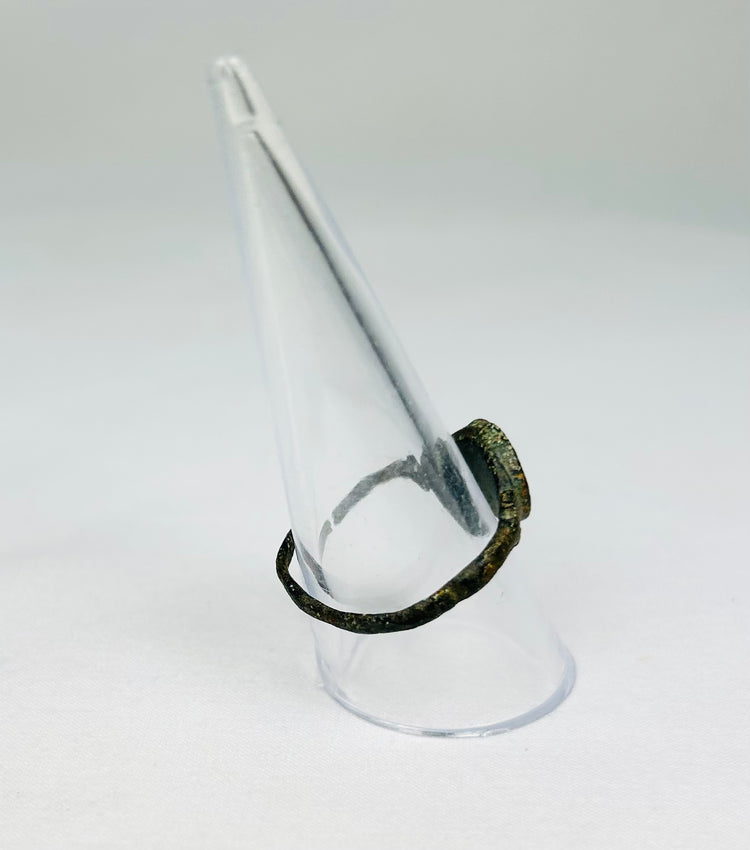Bague de sceau en bronze de la Rome antique | Vers 150-250 apr. J.-C.
Description
Plus
Moins
Contexte historique et origine
Région : Empire romain (Méditerranée)
Matériau : Bronze coulé avec lunette gravée
Période : Empire romain, Ier-IIIe siècle de notre ère
Description
Cette bague de sceau en bronze de la Rome antique représente un hippocampe finement gravé – l'hippocampe mythique à tête et pattes antérieures de cheval, ainsi qu'à queue de poisson. L'hippocampe était étroitement associé à Neptune (Poséidon dans la mythologie grecque), dieu de la mer, et symbolisait la force, la grâce et les mystères de l'océan. Ce type de bague servait à la fois d'ornement personnel et de sceau pratique, permettant de marquer documents, propriétés ou biens de l'emblème unique de son propriétaire.
Caractéristiques
- Lunette gravée représentant un hippocampe (hippocampe mythique)
- Symbolisme lié à Neptune et à la puissance maritime romaine
- Bronze coulé avec patine développée par l'âge
- Design fonctionnel conçu à la fois comme bijou et comme sceau
Importance culturelle
Dans la culture romaine, les anneaux de sceau étaient des outils essentiels d'identité et d'autorité, portés par les fonctionnaires, les marchands et les élites pour authentifier documents et biens. Le choix de l'hippocampe reflète l'importance de la mer dans le commerce romain, l'expansion militaire et la mythologie, incarnant la puissance divine et la maîtrise de la Méditerranée par l'empire. Une telle imagerie renforçait à la fois les croyances personnelles et le statut social.
Condition
La bague présente une cassure au niveau de l'anneau, phénomène fréquent sur les bagues en bronze antiques, bien que le chaton et le motif de l'hippocampe soient bien conservés. La patine de surface souligne son ancienneté tout en préservant l'intégrité des images gravées.
Dimensions (approximatives)
Taille de la bague : 9,5 US
Âge
Ier-IIIe siècle de notre ère
Description
Contexte historique et origine
Région : Empire romain (Méditerranée)
Matériau : Bronze coulé avec lunette gravée
Période : Empire romain, Ier-IIIe siècle de notre ère
Description
Cette bague de sceau en bronze de la Rome antique représente un hippocampe finement gravé – l'hippocampe mythique à tête et pattes antérieures de cheval, ainsi qu'à queue de poisson. L'hippocampe était étroitement associé à Neptune (Poséidon dans la mythologie grecque), dieu de la mer, et symbolisait la force, la grâce et les mystères de l'océan. Ce type de bague servait à la fois d'ornement personnel et de sceau pratique, permettant de marquer documents, propriétés ou biens de l'emblème unique de son propriétaire.
Caractéristiques
- Lunette gravée représentant un hippocampe (hippocampe mythique)
- Symbolisme lié à Neptune et à la puissance maritime romaine
- Bronze coulé avec patine développée par l'âge
- Design fonctionnel conçu à la fois comme bijou et comme sceau
Importance culturelle
Dans la culture romaine, les anneaux de sceau étaient des outils essentiels d'identité et d'autorité, portés par les fonctionnaires, les marchands et les élites pour authentifier documents et biens. Le choix de l'hippocampe reflète l'importance de la mer dans le commerce romain, l'expansion militaire et la mythologie, incarnant la puissance divine et la maîtrise de la Méditerranée par l'empire. Une telle imagerie renforçait à la fois les croyances personnelles et le statut social.
Condition
La bague présente une cassure au niveau de l'anneau, phénomène fréquent sur les bagues en bronze antiques, bien que le chaton et le motif de l'hippocampe soient bien conservés. La patine de surface souligne son ancienneté tout en préservant l'intégrité des images gravées.
Dimensions (approximatives)
Taille de la bague : 9,5 US
Âge
Ier-IIIe siècle de notre ère
Vous aimerez peut-être aussi































